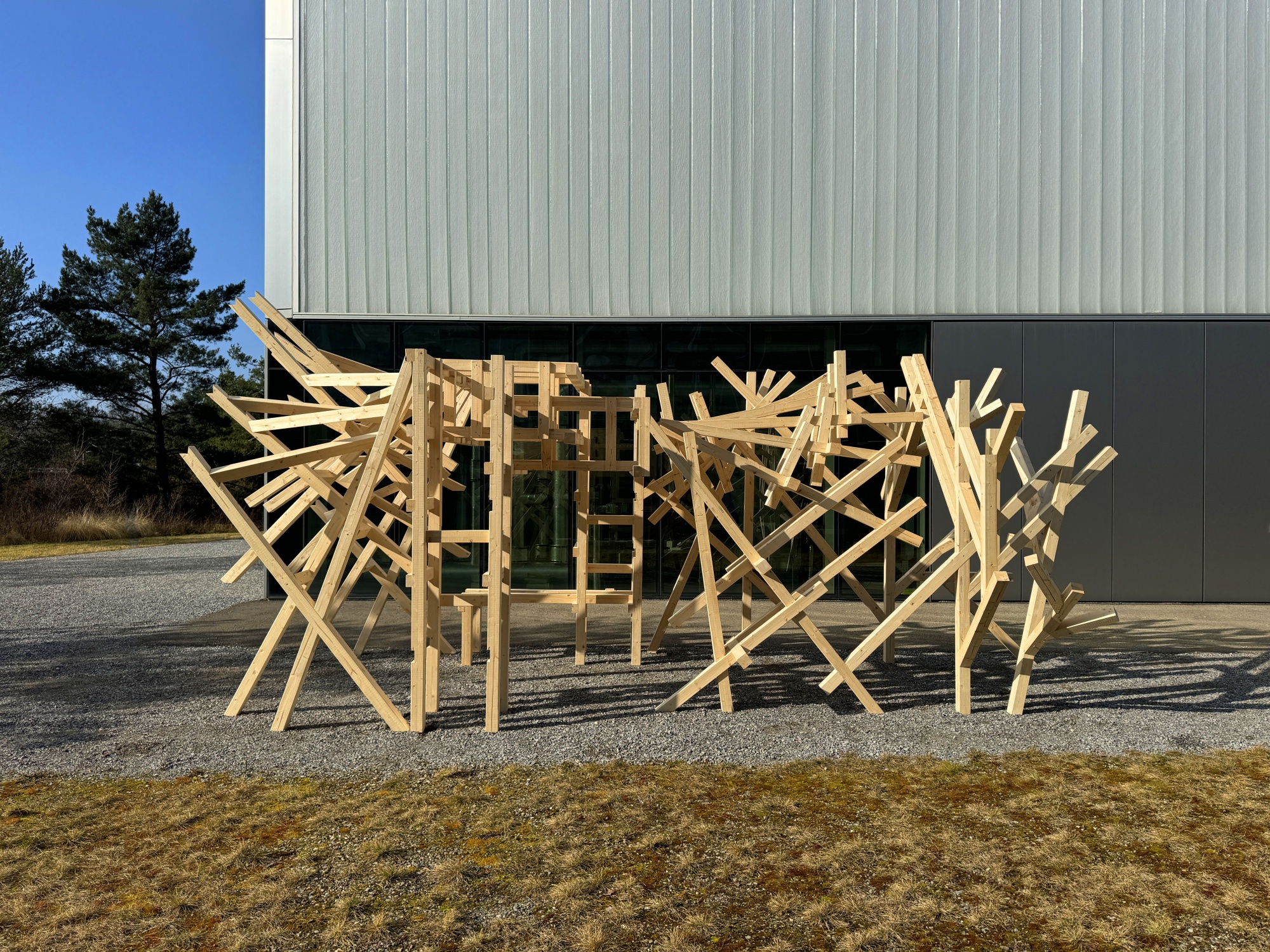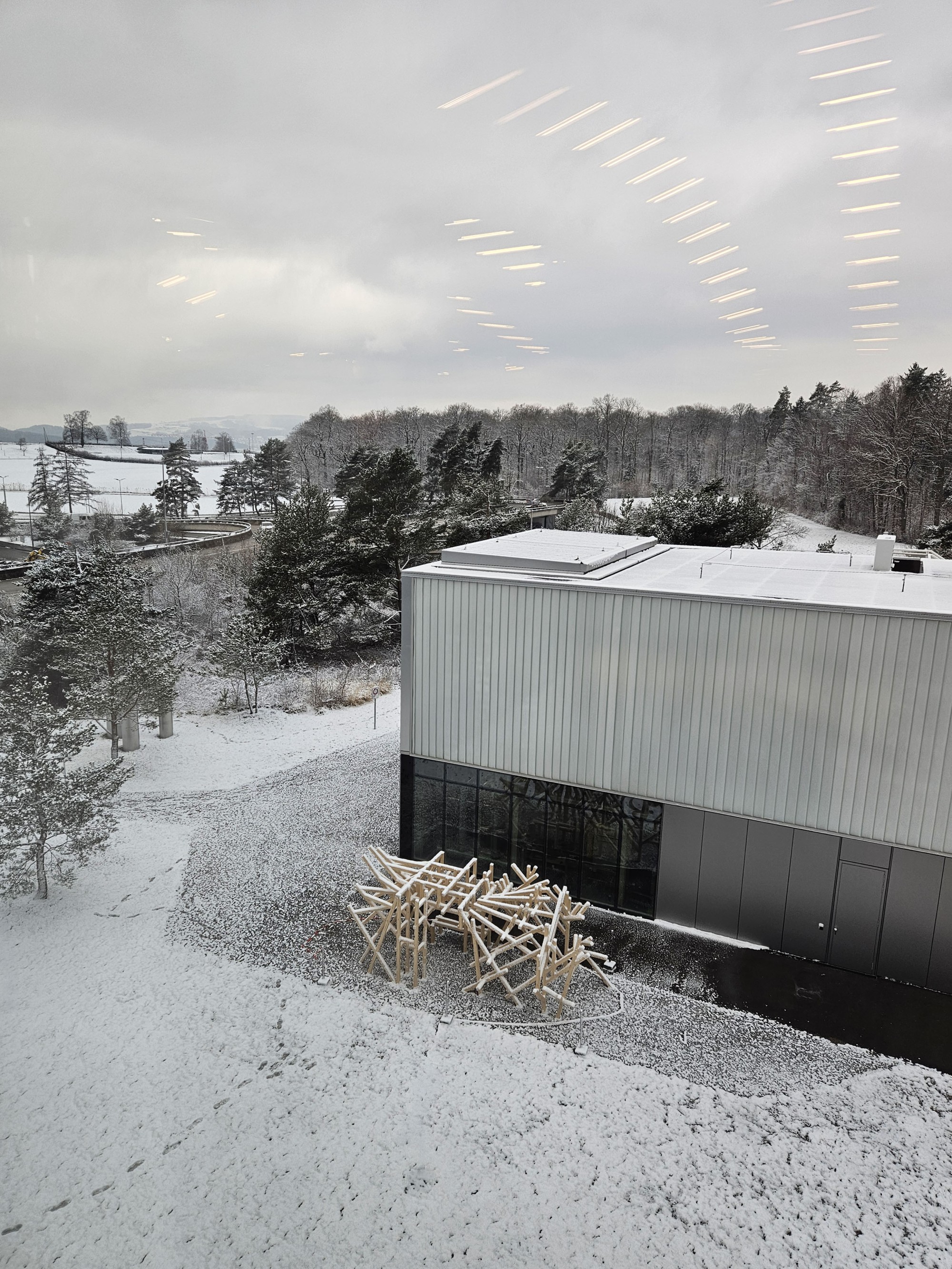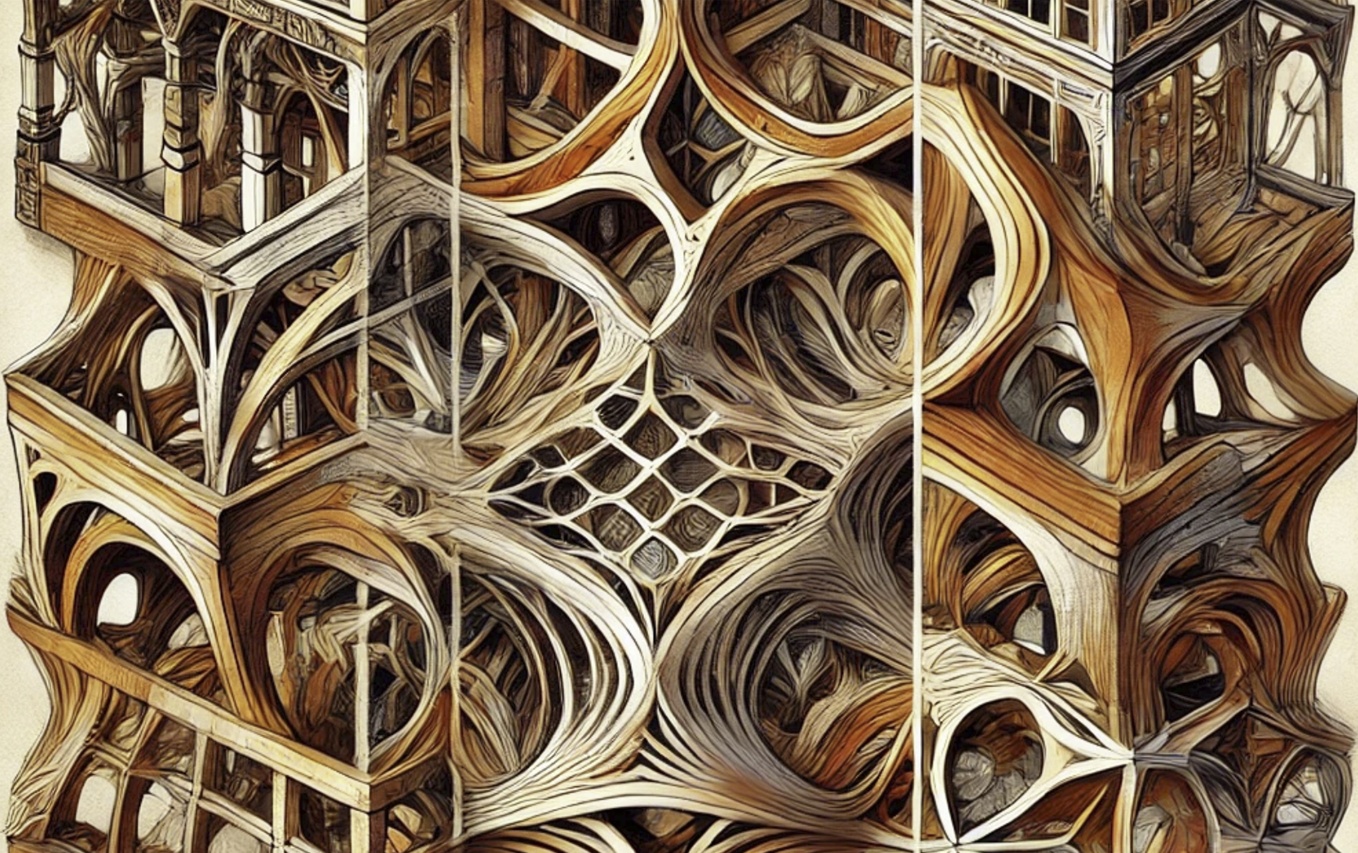CadavreExquis

As part of the first trimester (T1) of the MAS ETH DFAB programme, students engaged in a one-month design-and-build challenge, developing interlinked timber structures in small teams. Inspired by the Surrealist drawing technique Cadavre Exquis, each group designed their structure with its own unique logic while ensuring seamless connections to the structures created before and after their own. This approach fostered an iterative workflow, where students had to anticipate design constraints and communicate critical information without seeing the full picture—mirroring real-world collaborative design challenges.
To achieve this, students developed parametric models capable of both demonstrating their timber logic and integrating the necessary connection points for continuity. The project also served as an opportunity to explore COMPAS Timber, which was used to design joinery elements and directly generate fabrication files. The workflow transitioned from digital design to hands-on fabrication, with students taking full responsibility for the CNC machining of their timber components.
With two weeks dedicated to design and another two to fabrication, the project emphasized rapid iteration and precision in digital-to-physical workflows. By linking computational modeling with direct fabrication, students gained an understanding of how parametric strategies can facilitate complex, collaborative construction processes, reinforcing the integration of digital tools in timber design and manufacturing.
Gramazio Kohler Research
Prof. Matthias Kohler, Prof. Fabio Gramazio, Petrus Aejmelaeus-Lindström (Project Lead), Oliver Bucklin (Research Lead), Panayiotis Papacharalambous, Ananya Kango, Joana Tomaz.
© Digital Building Technologies | Gramazio Kohler Research | ETH Zurich



